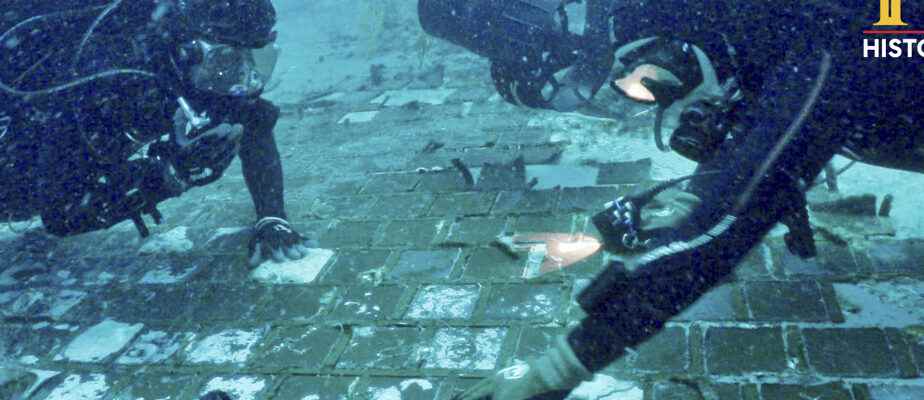(Washington) Divers seeking to find the remains of a missing plane in the Bermuda Triangle have instead discovered, at the bottom of the sea, a vessel of an entirely different kind: part of the space shuttle Challenger.
Updated yesterday at 10:32 p.m.
In 1986, this shuttle had exploded a few tens of seconds after taking off in Florida, causing the death of the seven crew members, including the teacher Christa McAuliffe.
The segment, remarkably preserved at the bottom of the Atlantic, is one of the largest pieces found after this tragedy that marked space history, NASA confirmed Thursday.
In images filming their discovery, made in the spring of 2022, two divers surrounded by fish reveal the shuttle’s emblematic thermal protection tiles from under the sand. These small black squares covered the entire underside of the ship, to enable it to withstand the infernal heat during its return to the atmosphere.
One of the two divers, Mike Barnette, told AFP that he had experienced a real “emotional roller coaster” when he realized what he was touching.
“When we found it, it was a lot of different emotions,” recalled this marine biologist, whose hobby is to explore wrecks at the bottom of the water. “I’m used to diving around wrecks that are tens or even hundreds of years old, but not a piece of the space program! »

NASA PHOTO, ASSOCIATED PRESS
“Quickly I realized it was something I had been through. When (the accident) happened, I remember exactly where I was, watching it live on TV,” he explained.
After his dive, he shows the images shot to an astronaut friend, who confirms his discovery. Then, a few months later, NASA confirms that it is indeed the shuttle Challenger.
“They were amazed at the size of the piece,” he says.
partly buried
The visible part is about 4.5 meters by 4.5. But the piece extends under the sand, buried, and we do not know for the moment its total size.
One thing is certain, “it is one of the largest ever found,” Mike Ciannilli, a NASA employee for more than 25 years, told AFP, mainly on the space shuttle program. Six shuttles were built in all, one of which had never been in space.
This is undoubtedly the underside of Challengerexplained Mr. Ciannilli, but difficult to know which part of the vessel exactly.
According to him, the analysis of this piece will not a priori bring anything new to the investigation into the accident itself, which he “will never forget” the sight of when he was very young. The causes of the tragedy have indeed already been well established (joints had frozen during the previous night). Observing how the materials have aged could still be interesting.
But above all, he emphasizes, the memory of Challenger must help revive the “lessons learned from this mission”.
After the accident, on January 28, 1986, extensive operations were carried out to find pieces of the ship. Ten years later, two new ones had reappeared on a beach, after a storm. These were the last found so far.
Only one piece is on display in a memorial open to the public at Kennedy Space Center, Florida, and the others are kept nearby.
“Honor their memory”
Last spring, the two divers were actually looking for a plane dating from the Second World War, for a documentary on the disappearances in the triangle of Bermuda.
The first episode, which will air on the History Channel on November 22, will finally have a spaceship as its star.
“That’s what I love about these adventures, you go looking for something and you come across a completely different mystery,” Mike Barnette said.
He explained choosing the sites explored thanks to the information of the fishermen, who guess where the wrecks are at the bottom of the water, because these attract fish. The site in question is slightly west of the Bermuda Triangle, not within it, but it was in the flight path of the aircraft sought.
The exact location of the discovery has not been revealed so as not to attract the curious, but is just off the coast.
According to the explorer, it would be “very easy” for NASA to extract the piece from the water, but such a gesture could also “reopen wounds”.
Discussions are ongoing, said Mike Ciannilli, but “whatever we do, our primary objective is to ensure that we honor the memory and legacy of the crew, and their families”.
